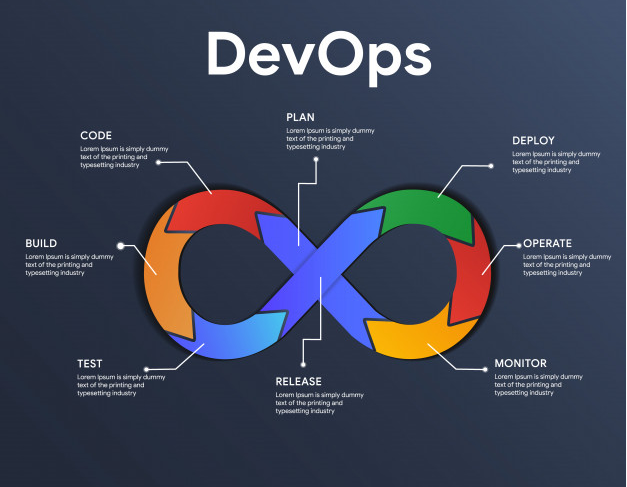Metrics That Matter the Most for the DevOps Teams
Audio : Listen to This Blog.
Metrics That Matter the Most for the DevOps Teams
Software development teams all over the world are now trying to make things better by working on making the processes more productive. What is Devops? DevOps is one of the techniques that has been widely accepted next to Agile, for enhancing the software development processes is DevOps. It is more of a long term change in the existing system that aims in bringing better collaboration of the development and operation teams so as to reduce development times and aim at reducing failure rates.
DevOps is great and so if you wish to adopt DevOps in your business it would be a wise decision. Businesses big and small are now relying on DevOps teams to help them deliver products on time and to improve the overall interaction within the teams as well. When we talk about the market demands we know that the parameters keep changing by the hour. Keeping up with the customers’ expectations is getting tougher. But if there is one thing that customers have always wanted and would continue to look for in the future too it is the quality of the product. Another aspect is the timely delivery of the product. Both of these can be achieved with the integration of DevOps and it also helps reduce the vulnerabilities in a product that can occur when done in a hurry without proper planning. Looking at DevOps as a holistic approach to the whole problem at hand is a good idea. But without periodic monitoring, you would not be able to figure out whether your investment on DevOps is actually giving you any benefits. Different businesses give different types of results and at different stages with the incorporation of DevOps. So it makes sense to understand the metrics that help understand the progress after bringing DevOps into your business:
The frequency of deployment:
Deployment frequency is a process oriented metric. This can help evaluate and understand the impact of DevOps on the processes. One noticeable benefit of DevOps has been the increase in deployment frequency. The development cycles are shortened with DevOps. So the development team is to deliver more number of deployments in a shorter period. So if you notice an increase in the number of deployments per day or those per week, you can be assured that your progress is on track. This can only occur as a result of a cumulative effect of other changes including better and quicker feedback, improvement in the response time and more.
Also Read: The Bond Between NodeJS and DevOps is now Getting Stronger
Change lead time:
Change lead time is again a process oriented metric. This is a measure of the actual time period from the beginning to the end of the entire deployment cycle. The concept stage where the coding actually begins marks the beginning of the deployment cycle. The time at which the product is fully done and deployed successfully marks the end. A reduction in this time would imply an improvement in the processes. This would be a factor to gauge the efficiency of the software development process itself. It might indeed differ from one product to another depending on the complexity of the code required. Whenever you notice the change lead times to be big figures it would be time to evaluate and figure out the factor that is causing the delay. It could be impacted by the efficiency of the team, flaws in certain stages of the development or deployment cycle. DevOps, when done right, would reduce the change lead time significantly.
Failure rate:
This is a technology based metric. It shows the technological factors where improvements are required in the long run. DevOps aims not just at shortening the development cycles but also to reduce the rate of failures. Frequent deployments would, after all, be futile if there are equally high failures to weigh things down. If the integration of DevOps in your teams is successful you would notice the failure rate drop significantly. This would also keep reducing further as the teams start getting better and the overall process starts improving as well. If you notice that your failure rate doesn’t change, or in the worst case if you notice that it is increasing then it would show a possible flaw in the incorporation of DevOps. It would be time to put a halt to the current processes and revise them so as to obtain an overall improvement.

MTTR- Mean time to recover:
While we know that the failure rates have to go down, there is one other metric that should not be ignored. It is the mean time to recover. We have only said that the failure rates drop. This would not ensure an absence of failures. No matter how big or small a failure it is, the efficiency of the processes to quickly recover from the failure and to straighten things out would matter the most. If the MTTR is longer it would be a clear indication that the team is not able to tackle and rectify failures promptly due to some reason. The reasons here could be the efficiency of the team or the limitations in technology or resources to handle the scenario. If the team doesn’t understand the failure or if the code is too complex or if the resources are not too familiar with the tools being adopted then it could lead to difficulties in resolving failures. This would be an even more severe condition than an increase in the failure rate itself.
Turnover:
Changes in the overall turnover would be a collective measure of how things are responding to the introduction of DevOps. This would also be a metric to understand the people based factors like the competency of the team and the response time in general. People centric metrics would be the most difficult to measure and the toughest to track as well. Rest assured, DevOps can, in the long run, promote better interactions and thus lead to more satisfied employees besides the reduction in the development cycles and failure rates.



